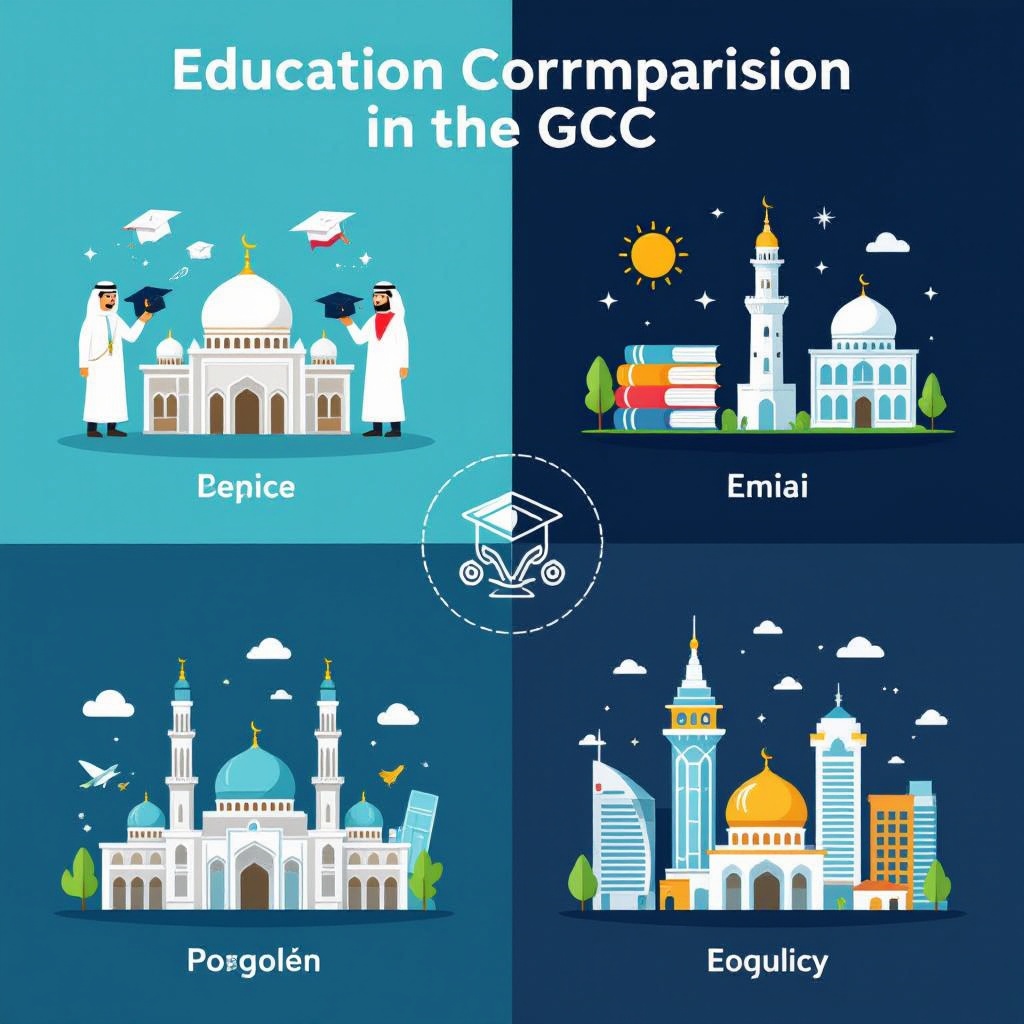Choosing between private and public schools in the GCC can be challenging due to distinct differences in cost, curriculum, and technology integration. Grasping these aspects is vital for making a choice that suits both family goals and your children’s individual needs. Key Points Private schools in the GCC come at a high cost, with average yearly tuition fees around $15,400, while public schools offer free or low-cost education. While many believe private schools perform better academically, studies show that public schools in the area can match or even exceed these outcomes. Private schools provide a variety of curricula and smaller class sizes, appealing to families who value specific academic routes and personalized attention. They also lead in embracing technology, investing heavily in AI and VR tools, while public schools often struggle with integrating such advancements. Teacher shortages and the need to maintain cultural awareness challenge private schools, whereas public ones enjoy stable support from the government. Please provide the array of search results that you would like me to process. Rising Costs and Affordability Challenges in GCC Private Schools Let’s have a chat about the financial commitments tied to private schooling in the GCC. On average, tuition fees sit around $15,400 a year, but premium schools can demand over $20,000. That’s close to 18% of many households’ annual budgets, which means some middle-income families can’t afford this option. Comparatively, public schools in the GCC offer free or significantly reduced-cost education, which is a big draw for middle-income families. These schools open doors without the financial burden that private schools can bring. With these costs in mind, it’s crucial to weigh the long-term economic impact of choosing private education over public. For more insights on school budgets, you might find the World Bank helpful. The Myths of Academic Superiority: Private vs. Public School Outcomes Many folks think private schools always outshine public ones academically. But that’s not the full story. Research shows once you account for factors like socioeconomic status and parental education, private schools don’t always come out on top. In fact, public schools in the GCC can match or even exceed their private counterparts sometimes. This challenges the assumption that private education always means better academic results. So, before choosing a school, it might be worth considering the specific needs of your child and looking at individual school performance. Check out local educational resources like the “Gulf News” or educational reports from UNESCO for comprehensive insights into school performance. Curriculum and Class Size: What Sets GCC Private Schools Apart In the GCC, private schools continue to attract many expat families, thanks to their diverse international curricula. Schools often offer a blend of British, American, IB, and CBSE programs, giving parents a wide range of educational options. This flexibility can be incredibly appealing for families seeking specific academic paths. However, these programs come with a higher tuition price compared to the national curriculum that public schools follow. Another significant advantage of private schools in the region is their smaller class sizes. This structure means more personalized attention for each student, something that large public classes can’t often provide. This approach can greatly benefit students who might need extra help or wish to stand out. If you’re curious about the potential advantages of various curricula types, you might check with sources like the International Baccalaureate’s official website. Private schools in the GCC have cemented their status as pioneers in adopting educational technology. AI tutors and VR tools are becoming staples, especially in elite institutions. The recent figures are staggering, with a whopping $1.4 billion spent on EdTech in 2023 alone. A significant 76% of top-tier private schools have embraced these advancements. This investment doesn’t just look good on paper; it redefines learning. These cutting-edge tools allow for more personalized teaching approaches. By blending traditional and digital learning models, private schools provide an environment where students can learn at their own pace. AI tutors offer tailored assistance, ensuring each student’s individual needs are met. VR tools, meanwhile, transport students to immersive learning experiences, like exploring ancient civilizations or participating in complex science simulations. While private schools race ahead, public schools lag behind. Their technology integration is slower or more restricted in scope. Without the same level of funding and prioritization, they often struggle to keep up. This growing gap means that families must weigh the benefits of advanced educational resources and personalized learning available in private schools against the more conventional approaches found in public education. For further details on the impact of technology in education, check out resources like EdTech Magazine offering in-depth insights on the trends and benefits of educational technology. This external link can provide a broader understanding of what private schools are bringing to the table in the GCC. Operational Challenges: Navigating Teacher Shortages and Cultural Sensitivity Teacher shortages are a pressing issue for private schools in the GCC. High living expenses, alongside complex visa regulations, make it tough to attract and retain qualified teachers. The recruitment game becomes even more competitive considering that the demand for educators is projected to rise until 2030. This creates a challenging atmosphere for private schools striving to maintain a high level of education. But there’s more. Balancing international education standards with respect for local customs isn’t easy. Private institutions often face a logistical puzzle as they try to align with global benchmarks while adhering to regional norms and regulations. By contrast, public schools seem to handle these tensions with more ease thanks to government backing, giving them an edge. Managing diverse needs effectively demands finesse and cultural awareness. These schools must blend the educational prowess expected by expatriate families with the cultural values significant to the local community. This might include adjustments in curriculum or school activities to ensure they’re culturally appropriate and aligned. For further insights on how global education trends impact teacher recruitment and cultural integration, you might want to check out the latest findings on UNESCO’s website. Frequently Asked Questions 💰 Why are private
